Introduction
The safety of our children is paramount in this world. Teachers, parents, and people who work in child care must know how to keep the kids safe. Child abuse training is an important part of making sure kids are safe and healthy. This blog post will discuss different parts of child abuse training and give people who want to care for and protect children new ideas and useful tips.
What is child abuse?
Child abuse includes physical, emotional, sexual, and neglectful mistreatment. Working with children requires early detection of these indicators. Statistics show that one in seven children was abused or neglected last year. Recognizing abuse signs is difficult but essential for action.
Children may show behavioral problems, regression, bruising, or injuries. Anxiety, despair, and withdrawal are symptoms of emotional abuse. Understanding these factors helps teachers, parents, and daycare providers safeguard children.
Training programs help people recognize these indications. Participants learn to recognize and react to warning indicators via interactive seminars and real-life situations. This proactive approach ensures youngsters get care quickly.
Child Protection Awareness
Protecting children is the job of workers, families, and towns. Everyone needs to work together to keep kids safe, and child abuse training gives people the skills they need to do this. Training creates a mindset of safety and alertness, pushing people to take action to stop abuse.
Child protection is about providing secure circumstances where children may flourish, not merely reacting to abuse. This requires school, home, and daycare policies that promote children’s well-being. Understanding their child protection duties helps teachers, parents, and caregivers fight for children’s rights.
Open communication is also stressed in training. Creating a secure space for kids to voice concerns is crucial. Talking to kids and building trust may avoid abuse and help resolve difficulties quickly.
Mandatory Reporting Roles
Teachers and childcare workers must report suspected child abuse to authorities under mandatory reporting legislation. These laws attempt to identify and remedy misuse quickly. Understanding mandated reporting is essential to child abuse training.
Training programs teach participants about legal obligations and reporting processes. Protecting children requires knowing when and how to report suspected abuse. Role-playing activities replicate real-life events to build confidence in managing them.
Reporting is not only the law; it is also the right thing to do. By reporting potential abuse, professionals help make the world a better place for kids. This process also shows how important it is for teachers, guardians, police, and social workers to work together.
Abuse Prevention
Educating, raising knowledge, and stepping in are all essential parts of stopping child abuse. Training programs teach people how to prevent abuse before it happens. These tactics are about making places safe, encouraging good behavior, and building healthy relationships.
Setting limits and expectations helps avoid this. Children must learn proper conduct, and adults must model it. Training programs help create and sustain expectations.
Building close connections with youngsters is another preventative strategy. Children are more willing to share their experiences when they feel appreciated and encouraged. Training emphasizes active listening and empathy, helping adults interact with kids.
The Signs of Abuse
Knowing how to spot the signs of abuse is essential for anyone who works with kids. Some signs may be clear, but others may be minor and easy to miss. Child abuse training teaches people how to spot these signs.
Unusual cuts or marks are one type of physical abuse. Changes in behavior or mood are another type of emotional abuse. Poor cleanliness or not getting enough food can be signs of neglect. People who go through training programs learn how to spot these signs and what they mean.
When abuse is caught early, it can be stopped quickly, making sure that children get the help they need. Training gives people the courage to do something when they think someone is abusing a child, which shows how important it is to be alert when protecting children.
Safe Environment
Making a place safe is one of the most important things you can do to stop child abuse. Child abuse training stresses how important it is to keep kids safe everywhere they are. These places include homes, schools, daycares, and neighborhood groups.
Training programs teach useful ways to make things safer, like implementing security measures, making rules clear, and regularly checking for risks. People learn how to create places where kids can feel safe and protected.
Creating a safe space also means promoting a mindset of acceptance and respect. People who go through training are told to celebrate differences and encourage understanding so that all children feel respected and understood. This method, including everyone, lowers the chance of mistreatment and helps kids grow.
Parents and Families
Families and parents are critical in keeping kids safe. One crucial part of child abuse training is learning how to talk to them well. Having good partnerships with parents and families strengthens the network of people who can help kids.
Training programs teach family communication and teamwork. They also contain information on kid safety, concerns, and support services. Professionals and families may develop an abuse prevention strategy together.
Knowledge and skills are also part of family engagement. Parent training helps them spot abuse and learn their rights. A coordinated approach ensures children get ongoing assistance throughout their lives.
Children Affected by Abuse
An essential part of child abuse training is learning how to help children who have been abused. To heal and get better, these kids need special care and attention. There are training programs that teach people how to help these fragile people in a kind and helpful way.
A big part of training is trauma-informed care, which stresses how important it is to know how abuse affects a child’s growth. People learn how to make safe, helpful spaces that help people heal and bounce back from setbacks.
Collaboration with mental health specialists is also stressed in training. Educators, caregivers, and therapists may collaborate to create child-specific treatments. This comprehensive approach supports children’s growth.
The Role of Schools in Child Protection
Schools are significant places to keep kids safe. They give people chances to learn, grow, and make friends. Child abuse training stresses the importance of schools in keeping kids safe and improving their health.
Training programs teach schools how to make safe, welcoming places for everyone. This means establishing rules that prioritize the safety of children, regularly teaching workers, and conducting regular safety checks.
Schools offer a unique chance to teach kids about their rights and duties. Training makes schools more likely to teach child safety as part of their regular lessons, giving students the tools to speak up for themselves and their friends.
Working with Community Partners
Working together with neighborhood groups is a vital part of stopping child abuse. Child abuse training stresses the importance of forming strong connections and relationships with social services, law enforcement, and neighborhood groups.
Training programs that teach people how to collaborate strengthen child safety efforts. Sharing information, organizing resources, and working together on projects to stop abuse are examples.
Community collaborations enable advocacy and awareness. Participants learn to work with their communities to safeguard children. By working together, communities can make all children safer.
Education and Professional Development
Professional growth and continuing education are essential parts of child abuse training. By maintaining the latest studies and best practices, professionals ensure they can protect children effectively.
Training programs give people ongoing chances to learn and grow. These programs include online classes, workshops, and lectures that cover a wide range of child safety issues. Participants are recommended to stay involved and look for new ways to learn.
Professional self-care is stressed in continuing education. Child protection may be stressful, but training helps manage stress and stay healthy. Self-care helps professionals give high-quality child assistance.
Conclusion
Child abuse training is crucial for child protection and well-being. Training teachers, parents, and childcare workers can make all children safer. Training helps people see abuse, stop it, and help victims.
Finally, child abuse training is essential to kid safety. It promotes attentiveness, safety, and teamwork to help children flourish. We can protect our children and improve their future by staying current on research and best practices.


